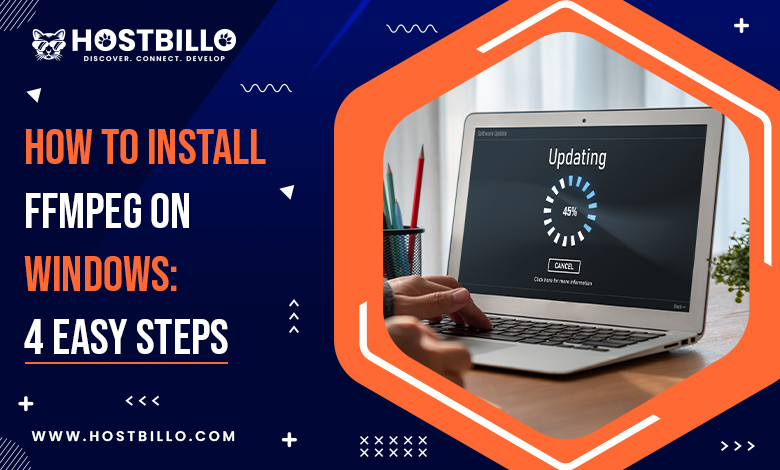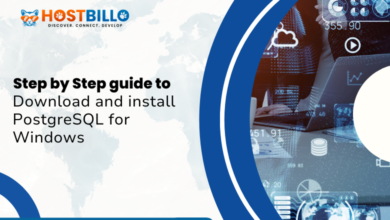
Introduction
For modifying videos and audio files, FFmpeg is an open-source, free software library. Both experts and beginners use it frequently for a range of projects, involving transcoding, simple editing, and more complicated jobs like filtering or streaming.
Simple and only requiring a few steps, installing FFmpeg on Windows is a straightforward procedure. But to avoid any problems, it’s crucial that you carefully adhere to the directions.
It needs to be added to the Windows path to get used from the command prompt with FFmpeg. The installation directory is no longer the only place from which you can access FFmpeg by doing this.
This post will show you the proper way to install FFmpeg on Windows in just four easy steps.
How To Install FFmpeg on Windows?

Windows PATH needs to be updated to install FFmpeg. The program can also be manually launched by users by going to the folder where it is located. It takes a long time and is not practical, though.
By modifying Windows environment settings, it is simple to add FFmpeg to PATH and use it. Windows is aware of the executable’s location as a result. The complete path to the app’s folder is not necessary when using FFmpeg straight from the command line.
4 Steps to Install FFmpeg on Windows

Step 1: Download FFmpeg for Windows
Go to the FFmpeg download section on Windows. There are FFmpeg executable files and packages for Linux, Windows, & Mac in the More Downloading Choices section. To FFmpeg install the version on Windows:
1. Choose the link for Windows versions from gyan. dev by hovering over the Windows logo. A fresh page loads.
2. Find the most recent FFmpeg build in the git master builds section. To download the whole build, select the ffmpeg-git-full-7z link because it includes the latest and most recent libraries.

Step 2: Extraction of the Downloaded Files
After downloading, unpack the files to reveal the following information:
1. Find the file that got downloaded. The Downloads folder is where it will usually get found.
2. Hover over 7-Zip (or another preferred file archiver) in the context menu when you right-click the file.
3. Pick Extract here under the archiver submenu. The extraction procedure needs a little while to finish.
4. Give the extracted folder the name ffmpeg.
5. Transfer the archive to the root of your C drive or another folder of your choosing.

Step 3: Include FFmpeg in the PATH
To add FFmpeg to the PATH on Windows variables related to the environment. Take the following actions:
1. Using the search bar, enter “system variables” and select “Edit the system environment variables.”
2. Choose Path from the User variables component, and then press the Edit button.
3. Select New in the menu on the side.
4. Include C:\ffmpegbin in the blank field and hit OK to save your modifications.
The addition of FFmpeg to PATH is confirmed by the modification to the Path variable line.
It should be noted that you should use the proper path if you’ve stored FFmpeg somewhere besides the C drive.

Step 4: Validate the FFmpeg PATH
Execute the following commands in PowerShell via the Command Prompt to confirm that FFmpeg has been appropriately introduced to the Windows PATH:
# Try to run ffmpeg -version
$ffmpegVersion = & { ffmpeg -version 2>&1 }
# Check if the command was successful
if ($ffmpegVersion -match 'ffmpeg version') {
# FFmpeg found in PATH
Write-Host "FFmpeg is found in your PATH."
# Optionally, display the version information
Write-Host $ffmpegVersion
} else {
# FFmpeg not found in PATH
Write-Warning "FFmpeg is not found in your PATH."
}The outcome validates the installation:
FFmpeg is found in your PATH.
ffmpeg version git-N-99999-g54247f0 copyright (c) 2000-2023 the FFmpeg developers
built with gcc 12.2.0 (MinGW-W64 x86-64) 20210621 copyright (C) 2014-2021 The MinGW and GCC Project
license GPLv2+ and LGPLv3+
configuration: –enable-gpl –enable-version3 –enable-libass –enable-libvorbis
libavcodec 59.73.100 / 59.73.100
libavformat 59.54.100 / 59.54.100
… (other library versions)
Also Read: How to Install Maven on Windows in just 4 Easy Steps
Conclusion
Its adaptability is one of FFmpeg’s key benefits. It can work with these files in an extensive variety of audio and video standards and can transcode, trim, merge, and do other things. We’ve already written thorough tips on how to use FFmpeg on Windows, for instance, to divide and convert audio files, and acquire HLS streaming videos, among others. Being able to handle and alter your multimedia files in a versatile and powerful manner serves as an invaluable tool for anyone dealing with video or audio content.




